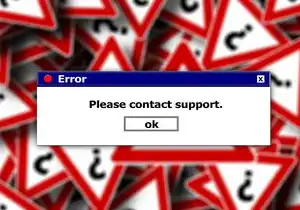IIS 6.0, as a robust web server platform developed by Microsoft, has been widely used for hosting websites and web applications. However, like any complex software system, it can encounter various issues that lead to errors such as the infamous "Internal Server Error." This error is often cryptic, providing little insight into its root cause. In this comprehensive guide, we will delve into the intricacies of diagnosing and resolving IIS 6.0 internal server errors, ensuring your web services remain operational and efficient.
Understanding IIS 6.0 Internal Server Errors
The "Internal Server Error" typically indicates that something went wrong on the server side while processing an HTTP request. This could be due to numerous factors, including misconfigured settings, faulty code, or resource exhaustion. To effectively troubleshoot these errors, it's essential to understand the underlying causes and systematically approach their resolution.

图片来源于网络,如有侵权联系删除
Common Causes of IIS 6.0 Internal Server Errors:
- Misconfigured Web Application Settings: Incorrectly set application pool identity, security permissions, or website bindings can trigger errors.
- Application Code Bugs: Malfunctioning scripts, unhandled exceptions, or improper use of resources can result in server errors.
- Resource Limitations: Excessive memory usage, CPU overload, or insufficient disk space can lead to service disruptions.
- Corrupted Files or Directories: Damaged files or directories within the web application can cause unexpected behavior.
- Incompatible Modules or Extensions: Outdated or incompatible modules may conflict with IIS 6.0, leading to errors.
Step-by-Step Troubleshooting Process
When encountering an IIS 6.0 internal server error, follow a structured troubleshooting process to pinpoint and resolve the issue efficiently:
-
Check Event Logs: The first step involves reviewing the Windows Event Viewer logs for detailed error messages. These logs provide valuable insights into the nature of the problem.
-
Examine IIS Manager: Utilize the Internet Information Services (IIS) Manager to inspect application pools, site configurations, and module settings. Look for discrepancies or anomalies that might contribute to the error.
-
Review Application Code: If the error seems related to specific web pages or functionalities, thoroughly examine the associated code for potential bugs or logical flaws.
-
Monitor Resource Usage: Employ performance monitoring tools to assess CPU, memory, and disk utilization. High resource consumption can indicate underlying issues.
-
Test with Minimal Configuration: Temporarily reduce the complexity of the web application setup to isolate the problematic components. This helps identify whether the error stems from a particular feature or configuration.
-
Consult Documentation and Forums: Leverage official documentation and online forums to seek guidance from experienced professionals who have encountered similar issues.
-
Implement Necessary Corrections: Once the root cause is identified, apply the appropriate fixes—be it updating configurations, correcting code, or addressing resource constraints.
-
Verify Changes: After implementing changes, test the web application thoroughly to ensure the internal server error has been resolved.
-
Implement Monitoring and Alerts: Set up proactive monitoring systems to detect future errors promptly and minimize downtime.

图片来源于网络,如有侵权联系删除
Advanced Techniques for Resolving IIS 6.0 Internal Server Errors
For more complex scenarios where standard troubleshooting steps fall short, consider employing advanced techniques:
-
Use Debugging Tools: Tools like Visual Studio Debugger or Fiddler can help trace the flow of requests and responses, pinpointing exact points of failure.
-
Enable Detailed Logging: Configure IIS to generate detailed error logs that capture extensive information about each request and response cycle.
-
Isolate and Test Components: Create isolated environments to test individual components or modules separately, facilitating easier identification of problematic parts.
-
Collaborate with Developers: Engage developers to review custom code and integrate their expertise in resolving application-specific issues.
-
Consider Third-party Tools: Explore third-party diagnostic tools designed specifically for IIS, which offer enhanced capabilities for error detection and resolution.
-
Stay Updated: Regularly update IIS and all associated components to benefit from the latest bug fixes and improvements.
-
Seek Professional Assistance: For persistent or critical issues, consult with IT professionals or support teams who specialize in IIS management.
By following these meticulous steps and leveraging both fundamental and advanced troubleshooting strategies, you can effectively address and prevent IIS 6.0 internal server errors, ensuring the smooth operation of your web services.
This comprehensive guide provides a detailed roadmap for tackling IIS 6.0 internal server errors, combining practical steps with expert insights to empower you in maintaining a reliable and high-performing web infrastructure.
标签: #iis6.0 内部服务器错误



评论列表